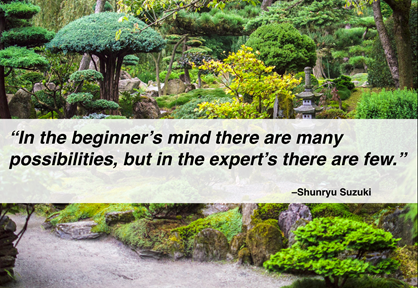The Main Principles Of Spectrophotometers
The Main Principles Of Spectrophotometers
Blog Article
Not known Details About Uv/vis
Table of Contents9 Easy Facts About Circular Dichroism DescribedSome Ideas on Uv/vis/nir You Need To KnowA Biased View of Circular DichroismThe 6-Second Trick For Uv/visHow Uv/vis/nir can Save You Time, Stress, and Money.

Although spectrophotometry is most commonly used to ultraviolet, noticeable, and infrared radiation, modern spectrophotometers can question wide swaths of the electromagnetic spectrum, including x-ray, ultraviolet, visible, infrared, and/or microwave wavelengths. Spectrophotometry is a tool that depends upon the quantitative analysis of particles depending upon just how much light is taken in by colored substances.
The Facts About Spectrophotometers Revealed
A spectrophotometer is commonly utilized for the measurement of transmittance or reflectance of services, transparent or nontransparent solids, such as sleek glass, or gases. Many biochemicals are colored, as in, they absorb visible light and for that reason can be measured by colorimetric treatments, even colorless biochemicals can typically be transformed to colored substances appropriate for chromogenic color-forming reactions to yield compounds appropriate for colorimetric analysis.: 65 However, they can also be designed to determine the diffusivity on any of the noted light ranges that generally cover around 2002500 nm utilizing various controls and calibrations.
An example of an experiment in which spectrophotometry is utilized is the decision of the stability constant of a solution. A certain chemical reaction within an option may take place in a forward and reverse instructions, where reactants form items and products break down into reactants. At some point, this chemical response will reach a point of balance called a stability point.
The Best Guide To Circularly Polarized Luminescence
The quantity of light that goes through the solution is indicative of the concentration of specific chemicals that do not enable light to travel through. The absorption of light is because of the interaction of light with the electronic and vibrational modes of molecules. Each kind of molecule has a specific set of energy levels connected with the makeup of its chemical bonds and nuclei and hence will absorb light of particular wavelengths, or energies, resulting in distinct spectral residential or commercial properties.
Making use of spectrophotometers spans different scientific fields, such as physics, products science, chemistry, biochemistry. UV/Vis, chemical engineering, and molecular biology. They are widely utilized in many markets consisting of semiconductors, laser and optical manufacturing, printing and forensic examination, as well as in labs for the research study of chemical compounds. Spectrophotometry is often used in measurements of enzyme activities, decisions of protein concentrations, decisions of enzymatic kinetic constants, and measurements of ligand binding reactions.: 65 Eventually, a spectrophotometer is able to figure out, depending upon the control or calibration, what substances are present in a target and exactly just how much through computations of observed wavelengths.
Developed by Arnold O. Beckman in 1940 [], the spectrophotometer was created with the aid of his colleagues at his company National Technical Laboratories founded in 1935 which would become Beckman Instrument Business and eventually Beckman Coulter. This would come as a solution to the previously produced spectrophotometers which were not able to soak up the ultraviolet properly.
Not known Details About Circularly Polarized Luminescence
It would be found that this did not offer satisfactory outcomes, for that reason in Model B, there was a shift from a glass to a quartz prism which enabled much better absorbance outcomes - circularly polarized luminescence (https://dzone.com/users/5082179/olisclarity1.html). From there, Model C was born with an adjustment to the wavelength resolution which ended up having 3 units of it produced
It was produced from 1941 to 1976 where the rate for it in 1941 was US$723 (far-UV accessories were a choice at additional cost). In the words of Nobel look at this web-site chemistry laureate Bruce Merrifield, it was "most likely the most crucial instrument ever established towards the development of bioscience." Once it became discontinued in 1976, Hewlett-Packard developed the first commercially offered diode-array spectrophotometer in 1979 known as the HP 8450A. It irradiates the sample with polychromatic light which the sample soaks up depending upon its properties. It is sent back by grating the photodiode range which finds the wavelength region of the spectrum. Ever since, the creation and execution of spectrophotometry gadgets has increased immensely and has actually turned into one of the most ingenious instruments of our time.

The Greatest Guide To Circularly Polarized Luminescence
Historically, spectrophotometers utilize a monochromator including a diffraction grating to produce the analytical spectrum. The grating can either be movable or repaired. If a single detector, such as a photomultiplier tube or photodiode is used, the grating can be scanned step-by-step (scanning spectrophotometer) so that the detector can determine the light intensity at each wavelength (which will correspond to each "step").
In such systems, the grating is fixed and the intensity of each wavelength of light is measured by a different detector in the range. In addition, most contemporary mid-infrared spectrophotometers use a Fourier change strategy to acquire the spectral information - https://us.enrollbusiness.com/BusinessProfile/6552779/Olis%20Clarity. This strategy is called Fourier change infrared spectroscopy. When making transmission measurements, the spectrophotometer quantitatively compares the portion of light that goes through a reference option and a test service, then electronically compares the strengths of the two signals and computes the percentage of transmission of the sample compared to the referral requirement.

Report this page